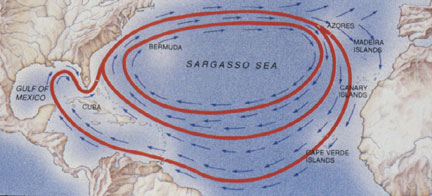Turtle Migration
Biology 342 Fall 2011
Hannah Schaupp, Shelly Skolfield, and Michaela Voorhees
Adaptive Value
The sea turtles’ migratory life history is thought to offer individuals a number of adaptive advantages:
Natal philopatry
Female sea turtles return to the beach of their birth to lay their eggs several times during the breeding season. This behavior is thought to help ensure that eggs and hatchlings will be well adapted to the specific conditions of the beach they are laid on due to the fact that their
ancestors survived the selective pressures of that same beach. [13]
(Image courtesy of Seaturtles.org)
Resource Partitioning
Sea turtle migration disperses individuals geographically according to life stage. This is thought to reduce intraspecific competition between sea turtles of different ages. Access to plentiful foraging is especially important for young turtles because the rate of survival is heavily influenced by the size of an individual. [13]
 Entrainment to Currents
Entrainment to Currents
Finding the right current can be crucial to the survival of young sea turtles. In the North Atlantic, the gyre current divides as it flows east toward Africa and Europe, sending some of its warm water back toward the equator but another portion flows into the frigid north. Sea turtles that fail to navigate the gyre back toward sub tropical seas are likely to perish in the cold waters of the European Atlantic.[12]
(Image courtesy of lohmann labs)